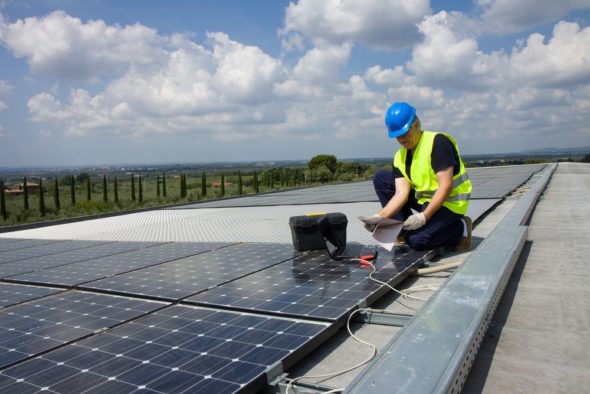The ever increasing power generation from renewables, accompanied by the lack of long-lasting and large-scale energy storage facilities will lead to compulsory shut-downs of green energy sources. This will undermine the ability to increase production from renewables and thwart the efforts to meet the energy transition goals. What is already happening in low-voltage systems, the so-called „wars of prosumer inverters”, is just a taste of what we will soon be dealing with in the entire grid -warns prof. Władysław Mielczarski in a comment for BiznesAlert.pl.
Vicious circle of investments in RES
The grid can only accept a certain amount of electricity, which must be immediately used up. The energy storage facilities that we currently have can postpone the consumption of power by several hours, which can increase the amount of energy entering the electricity system, but to a small extent.
A kind of a vicious circle is created: the more capacity there is in renewables, the more power they generate. However, the grid cannot take in all this power at a given moment, which means the RES installations have to be shut down, which means less power is generated from renewables.
As the capacity of RES increases, the need for forced shutdowns (curtailment) of this type of installations and reducing production in relation to the expected volume, will go up. This will affect not only the cost-effectiveness, but also the need to significantly increase the installed RES capacity in order to achieve climate policy objectives. It also means that the money spent on increasing generation from renewables is being wasted.
How much more RES capacity?
An increase in the input of energy from renewable sources into the electricity system leads to a decrease in production from other sources. However, such a reduction has certain limits. Centrally dispatched power generating facilities (JWCD) should operate with a capacity of no less than 5000MW (network must-run), and n-JWCD power plants operate in the summer with a capacity of about 2500MW, while in the winter n-JWCD operate with a capacity of about 5500MW, because CHP plants need to generate heat.
To illustrate the problem of excess RES capacity, a calculation was made on the basis of modified data for 19.06.2022 and the projected capacity of RES at the end of 2022. The calculation takes into account only the power and energy from wind and PV panels, since other RES technologies are included in the power produced by n-JWCD.
The grid is capable of absorbing about 14700MW of power generated from RES in the summer and 16500 MW in the winter. These figures are smaller than the RES capacity installed in mid-2021, and amount to 18 GW just for wind and PV, which means we are already facing a certain surplus of RES in relation to the capabilities of the grid.
If the capacity installed in wind turbines and PV panels was to be fully utilised, the excess capacity would be around 3300mw in June 2022, and around 3500mw at the end of the year. Since the installed capacity of both PV panels, and after the expected liberalization of the 10h law, also of wind turbines will increase, it will also further up the unused excess capacity of RES.
Energy storage?
Power storage is one solution to the problem of unused power generated from RES. Such storage would have to be able to hold energy for a few months and would have to have power of 10-20 GW, and capacity that could last for a few windless, winter days. Prosumer energy produced from PV panels during the summer would have to be stored there to be used in the winter for heat pumps. Using coal piles for the storage of prosumer energy should be limited.
Unfortunately, there are currently no known technologies that would allow building long-term and large-scale energy storage facilities. Not only is there no technology, but there aren’t any ideas on how such energy storage could be built, because large-scale hydrogen technologies are still just a dream, but that’s an old story.









